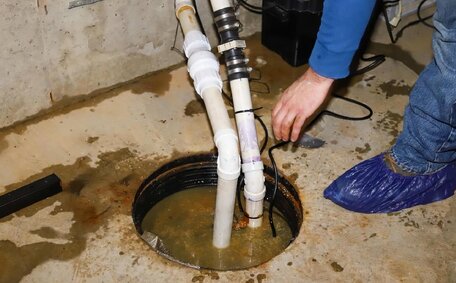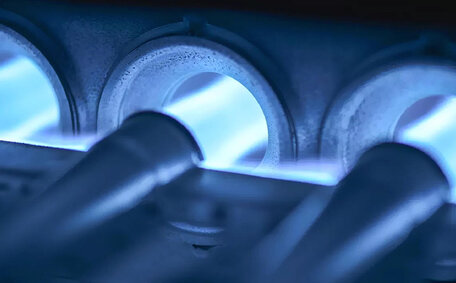Introduction to Storing Gas Cylinders Safely
Ensuring the safe storage of gas cylinders is critical, especially in urban locations like Paddington, Sydney. Gas cylinders, including lp gas and other fuel gases, are used in both commercial and residential settings. However, improperly stored cylinders pose serious health and safety risks due to their flammable contents.
There are many types of gas cylinders used in Paddington, containing various compressed gases like propane, acetylene, oxygen, carbon dioxide, and more. While convenient, gas can be under pressure within cylinders and contain flammable or toxic contents, making proper handling and storage essential.
Incorrect storage of gas cylinders can result in gas leaks, explosions, and in severe instances, injuries or fatalities.
This article will provide an overview of the key work health safety considerations for where gas cylinders should be safely stored in areas where commercial and residential settings intersect within Paddington. Following proper guidelines for the safe use cylinder and storage of gas is vital for mitigating the hazards associated with these dangerous goods and protecting the wellbeing of workers and the public.
Evaluating the Storage Environment
Evaluating the storage environment for gas cylinders requires careful consideration of both indoor and outdoor conditions. Storage areas must ensure sufficient ventilation at ground level, as several gases are denser than air. LPG cylinders should be stored securely upright and keep gas bottles away from potential hazards in a proper gas cylinder storage area to prevent tipping and fitted with valve protection caps.
When stored indoors, cylinder stores should be kept in a gas cabinet or well-ventilated area, no more than 5 metres distant from any ignition sources and segregated from incompatible substances.
Outdoor gas bottle storage is often preferred, ensuring cylinders are shielded from the elements. The store should place restrictions to secure from public access and be located away from vehicle traffic. Australian Standard AS 4332 outlines compliance requirements for the outdoor storage of gas cylinders. Suitable signage, lighting, and firefighting equipment are required for any gas cylinder storage setup.
Cylinders stored outside should never be left unrestrained; they must be kept upright and secured in a gas bottle cage or chained to prevent falling.
Protecting against cylinder falls, notably by distancing them from vehicle cargo areas, helps mitigate risks such as leaks and explosions. Adhering to safety regulations, performing risk assessments, employing control measures, and creating emergency procedures are fundamental for the safe storage of gas cylinders.
Securing Cylinders Upright
LPG cylinders must always be handled and transported in an upright position. Lying cylinders down can compromise safety by allowing liquid gas to reach the regulator or cylinder valves, posing significant risks. Securely upright storage of gas cylinders requires the use of restraints like chains, straps, or specially designed cradles.
When securing your gas cylinder, restraints must also be placed around the cylinder approximately 2/3 of the way up from the base. This prevents the cylinder from tipping while also avoiding placing stress on the cylinder valve at the top in the cylinder storage area. Measures should be taken to ensure gas cylinders are able to withstand a force applied in any direction without falling over.
Gas cylinders under improper restraints can fall over in storage areas, vehicles or work sites, leading to leaks, explosions and serious injuries. Using suitable restraints for the cylinder’s shape and size is crucial. Routine inspections to verify the correct application of cylinder restraints are crucial to ensure continuous upright storage.
Segregating Gas Cylinders by Type
Gas cylinders must be segregated by their hazard type as a crucial safety measure. Cylinders must be segregated by their dangerous goods classification, as different gas classes have varied properties, including toxicity and corrosiveness. This prevents incompatible gases from interacting in the event of a leak.
Australian Standard AS 4332 stipulates a minimum separation distance of 3 metres between incompatible gas cylinders to mitigate fire risks. Common classifications to segregate include flammable, oxidising, toxic/corrosive and inert gases. To prevent confusion, full and empty cylinders must be stored separately.
Storing incompatible gas cylinders together can end up with devastating consequences in the event of an accident or leak. Reactive gases can undergo combustion, explode or release toxic fumes. Proper segregation of gas cylinders reduces the risk of toxic gas mix-ups and averts disasters in storage areas.
Implementing Proper Signage
Proper signage is vital for identifying potential gas leaks in cylinder storage areas. Warning signs need to clearly identify the hazards present, including the specific types of flammable gases stored. Regulatory signs should also indicate restricted access, no smoking policies and emergency contact details.
Entry points to the cylinder store areas should feature clear signage stipulating authorised access only. Hazard identification signs specifying the classifications and UN numbers of gases stored must be prominently posted as per Australian Standard AS 1319. Safety signs must detail PPE requirements and prohibit ignition sources.
Within the storage area, position directional signage to facilitate safe movement and cylinder segregation. Use informatory signage like gas cylinder registers and areas designated for full empty cylinders. Ensure adequate illuminated exit signs are installed.
Clear signage helps those dealing with gas cylinders, including workers and emergency responders, to rapidly recognise hazards and the necessary emergency actions. All signs should displayed clearly and must be maintained in good condition as part of regular storage area inspections. Implementing suitable signage is critical for both safety and compliance when storing gas cylinders.
Optimizing Ventilation
Adequate ventilation reduces the likelihood of fire or explosion by dispersing leaked gases, an essential aspect of safe gas cylinder storage. Ventilation also prevents the accumulation of static electricity, which could ignite flammable gases.
For indoor storage, natural ventilation using louvred windows is suitable for minor storage areas. Mechanical ventilation and extraction systems can also be recommended for larger indoor stores to effectively remove hazardous vapours. Ventilation should be continuous and increase near floor level where gases accumulate.
Since LPG and other types of liquefied petroleum gas are generally heavier than air, effective low-level ventilation is imperative. Australian Standard AS/NZS 1596 provides guidance on ventilation requirements for certain quantities and types of flammable gases. Grasping storage lpg properly is crucial, especially for outdoor storage in the open air which also needs good ventilation, so enclosures should be open-sided or have ventilation slots at the bottom.
Regular maintenance checks should confirm ventilation is operating effectively for all gas cylinders stored. Optimising ventilation for gas lpg storage through natural or mechanical means is a key control measure when storing gas cylinders and mitigating the risks of leaked gases gathering.
Conducting Routine Maintenance
Consistent maintenance is critical to preserve the safety and regulatory compliance of gas cylinder storage. A competent person should conduct routine inspections following a maintenance schedule, at minimum annually.
Cylinder maintenance involves checking for defects like corrosion, damage, leaks or loose valve fittings. Damaged or out of service cylinders must be clearly identified and removed. Pressure relief valves should be periodically tested at an approved test station.
Look for cylinder leaks or other deterioration. All maintenance should be documented.
Confirm ventilation, firefighting equipment, segregation, restraints and security measures are properly functioning.
Regular maintenance helps ensure compliance with safety codes and prevention of hazards in gas cylinder storage. It helps identify risks early so they can be controlled. Ongoing maintenance by competent personnel is vital for managing the hazards of gas cylinders in storage.
Pressure relief valves should be pep>
Adhering to Relevant Regulations and Standards
In Paddington, Sydney, compliance with Australian regulations and standards is essential when storing and handling gas cylinders. AS 4332:2004 - The storage and handling of gases in cylinders, provides guidelinhe storage, handling, transportation and use of gas cylinders across different industries an maintenance and other control measures. There are sections dedicated to certain hazard classes of gases like flammable, oxidising, corrosive and toxic.
At Paddington Plumbing, we collaborate with the gas association to ensure diligent compliance with AS 4332 and all other applicable regulations within our gas cylinder store area. Our staff are trained in the safe on-site handling of your gas bottles and their specific requirements during plumbing, gas fitting and related works. We safely store cylinders at our facility as per the standard.
Thorough research into gas cylinder safety regulations and laws is a priority for us. This ensures we mitigate risks and operate legally when handling dangerous goods. Rigorous compliance with standards such as AS 4332 is at the heart of our protocol for safe storage and management of gas cylinders in Paddington.
Developing Emergency Response Plans
A detailed emergency response plan is vital to ensure swift and safe handling of accidents involving gas cylinders. The plan should cover responses to leaks, fires, explosions, injuries or other cylinder-related incidents.
The response plan should include provisions for detecting gas leaks early using fixed or portable gas monitoring systems. Adequate firefighting equipment like extinguishers and hydrants must be readily available, ideally with sprinklers installed. First aid stations should be clearly identified and stocked for treating injuries.
Training personnel in emergency procedures through regular drills is key. Prominent signage for emergency contacts, meeting points, evacuation routes and hazard information will facilitate a rapid response. Calling emergency services like fire crews at the first sign of an incident is advised.
Developing a comprehensive emergency response plan enables prompt action in containing leaks, evacuating areas, administering first aid, and managing gas cylinder emergencies. This limits escalation and harm to workers, emergency responders and the public when accidents occur.
A detailed emergency response plan is vital to ensure swift and safe handling of accidents involving gas cylinders.
Prominent signage for emergency contacts,oper training is essential for anyone handling or storing gas cylinders to minimise safety risks. Comprehensive training programmes should cover:
- Safe handling procedures for transporting, connecting and disconnecting d responding to gas leaks.
- Securing cylinders safely for transport and storage.
- Segregation and storage requirements for incompatible gases.
- Emergency and incident response protocols.
Personnel should receive both initial and refresher training in gas cylinder safety. Following safe work procedures a






